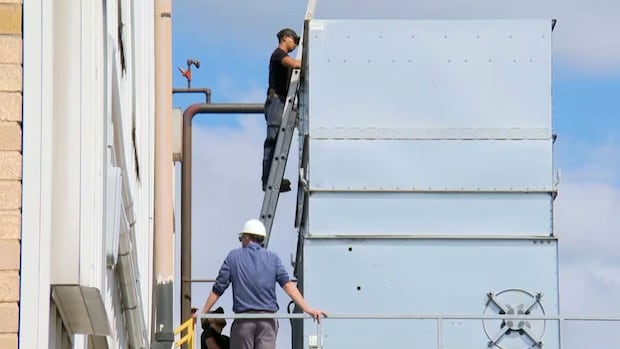After months of thorough investigation, numerous case mappings, and extensive lab testing, health authorities in London, Ontario have identified the likely source of a recent outbreak of legionnaires’ disease that resulted in four fatalities and approximately 100 infections. Pinpointing the origin of such illnesses remains challenging, as demonstrated by the complexity of tracing the spread of legionnaires’ disease.
Recent findings from the Middlesex-London Health Unit (MLHU) indicate that the outbreak in London was likely linked to the cooling towers of a local meat-processing plant in the city’s east end. Interestingly, this facility was also associated with a previous outbreak in the region that resulted in two fatalities and 30 illnesses last year. Similarly, in Harlem, New York, health officials faced a similar challenge in identifying the source of a legionnaires’ outbreak, eventually tracing it back to cooling towers at a hospital and a nearby construction site.
Experts highlight the difficulties in tracking down the source of legionnaires’ outbreaks, citing challenges such as sampling potential sources and conducting accurate bacterial testing. Dr. Joanne Kearon, the MLHU’s associate medical officer of health, mentioned that in 50% of cases, the source of a legionella outbreak remains unidentified due to the airborne transmission of the bacteria, unlike foodborne outbreaks where exposure typically occurs in a single location.
Legionella bacteria, which cause “atypical pneumonia,” are naturally present in freshwater sources like lakes and streams but become hazardous when they proliferate in human-made systems such as cooling towers, water tanks, and even swimming pools. The bacteria can spread through contaminated aerosols, leading to respiratory illnesses like legionnaires’ disease, particularly affecting older individuals with weakened immune systems.
Cooling towers, commonly found on industrial buildings and high-rises, are often the primary culprits in legionnaires’ outbreaks due to their potential to spread legionella bacteria over long distances. The maintenance of these systems is crucial to prevent infections, as legionella can form a biofilm that resists disinfection efforts, necessitating thorough cleaning protocols.
In London, the search for the legionnaires’ outbreak source was akin to “finding a needle in a stack of needles,” with health officials scouring a densely populated area with numerous cooling towers. The task of locating and testing these towers is labor-intensive, requiring meticulous sampling and testing procedures to confirm the presence of legionella bacteria.
Despite challenges, health authorities managed to identify the source of the recent outbreak in London after several weeks of investigation and genetic analysis of legionella samples. With 160 samples collected from 49 cooling towers, authorities confirmed a match and initiated cleaning procedures at the implicated meat-processing plant. While the Ontario Ministry of Health did not disclose potential consequences for the company, past outbreaks have led affected individuals to pursue legal action against responsible parties.



